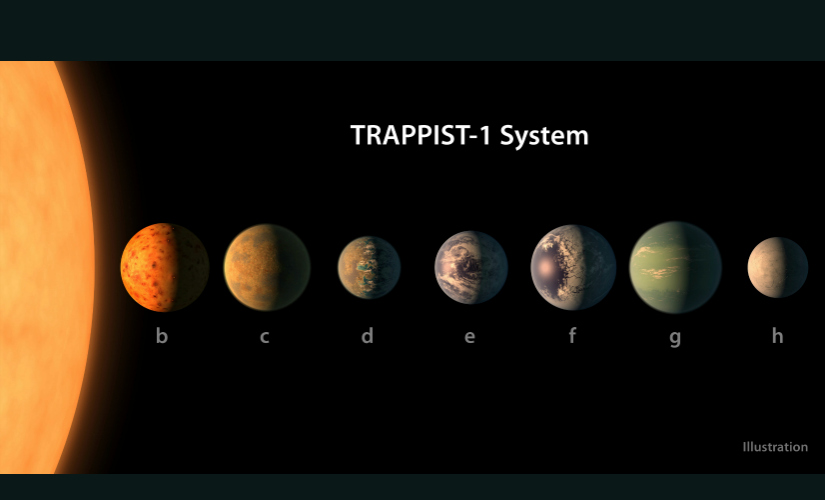Paris: Seven Earth-like planets orbiting a small star in our Galaxy called Trappist-1, revealed Wednesday, are the most recent — and arguably the most spectacular — in a string of exoplanet discoveries going back 20 years. [caption id=“attachment_3297852” align=“alignnone” width=“825”] This illustration provided by NASA/JPL-Caltech shows an artist’s conception of what the TRAPPIST-1 planetary system may look like, based on available data. AP[/caption] Herewith a backgrounder on the search for life beyond the horizon of our Solar System. What is an exoplanet? Simple: any planet outside our Solar System. The first exoplanet was detected in 1995, but the number has exploded in the last few years. A recent statistical study estimated that there are a trillion in our galaxy alone. Today, according to a tally by NASA, there are 3,449 known exoplanets. Of those, 1,264 are so-called ice giants, 1,043 are gas giants, and 781 are “super Earths” with masses many times higher than the rock we call home. Before Wednesday’s announcement, astronomers had spotted only 348 smaller terrestrial planets with Earth-like mass, and of those only a handful in a “temperate” zone that would allow for the presence of liquid water — a key ingredient for life (as we know it). How are exoplanets detected? There are several ways to find planets that cannot be directly observed, according to NASA. WOBBLE WATCHING: This involves looking for changes in the colour spectrum emitted by a star due to the gravitational pull of one or more invisible planets. If these patterns are regular and cyclical, corresponding to a tiny wobble in the star, chances are they are caused by a planet. Also called radial velocity, this is how another exoplanet, Proxima b, was discovered last year. Exoplanets found this way: 17.6 percent. SHADOW SEARCHING: When a planet passes directly between its star and an observer — an astronomer peering through a telescope, or a satellite in space — it dims the star’s light by a tiny but measurable amount. This so-called “transit” method has been the most successful so far — NASA’s Kepler spacecraft used it to find thousands of candidate planets from 2009 to 2013. Obviously, if a planet doesn’t happen to be on the same plane as the star AND the observer, it doesn’t work. Exoplanets — including the seven orbiting Trappist-1 — found this way: 79 percent. PICTURE PRODUCING: Snapping a picture of an exoplanet in front of its star is something like trying to photograph a microscopic speck of dust on a glowing lightbulb. But by removing the blinding glare of the star, astronomers can capture an image, a method called direct imaging. Only a tiny fraction of distant planets have been detected this way: 1.2 percent. BEAM BENDING: In another technique, light from a distant star is bent and focused by gravity as an orbiting planet passes between the star an Earth. Called gravitational micro-lensing, the gravity of the planet and star focus light rays of the distant planet on an observer in the same way that a magnifying glass focuses the Sun’s light onto a tiny, bright spot. Only a handful of exoplanets have been found using this method. What conditions support life? That depends on what the meaning of “life” is! For life as we know it, liquid water is an essential ingredient. Of the exoplanets found to date, however, only a handful are in a “temperate” zone in relation to their star: not so hot that water evaporates, not so cold that it freezes rock solid. Life on Earth is also unimaginable without an atmosphere, containing in our case the oxygen we need to survive. An atmosphere also protects animal species in particular from damaging high-energy radiation from the Sun — ultraviolet and X-rays. But as we do not even know yet how life emerged on Earth, it is also possible that living creatures elsewhere in the Universe could survive and thrive in conditions that would be lethal for our tender-footed species. To read Exoplanet discovery: Nasa telescope finds seven earth-like exoplanets around a single star on Tech2.
Click here .
Seven Earth-like planets orbiting a small star in our Galaxy called Trappist-1, revealed Wednesday, are the most recent — and arguably the most spectacular — in a string of exoplanet discoveries going back 20 years.
Advertisement
End of Article


)
)
)
)
)
)
)
)
)



